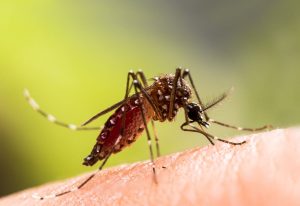Experts have long recommended breastfeeding for its many benefits for infants, but a new study puts a hard number on breast milk’s lifesaving effects.
Breastfeeding is associated with a 33% reduction in infant deaths in the first year, according to the study of nearly 10 million U.S. babies.
The research looked at babies born in 48 states and Washington, D.C. between 2016 and 2018. It expands upon smaller studies that had found a reduction in deaths of between 19% and 26%.
Breastfeeding “is so protective against many acute and chronic illnesses for infants and children,” said lead investigator Dr. Julie Ware, of the Cincinnati Children’s Center for Breastfeeding Medicine.
Breastfeeding for any amount of time during the first two months reduces incidence of sudden infant death syndrome (SIDS) by up to 40%, Ware said. That figure jumps to 60% if babies are breastfed between four and six months, she added. Among premature infants, breastfeeding also reduces deaths from necrotizing enterocolitis, a life-threatening illness of the intestines.
The benefits are not from nutrients alone or even the skin-on-skin nature of breastfeeding, though those add value, too.
“Breast milk is jam-packed with so many immune protection molecules, bioactive components, that really prime the immune system of the baby,” Ware said. “The immune protection, it’s like a powerhouse inside the breast milk.”
For the study, published recently in the American Journal of Preventive Medicine, researchers used data from the U.S. Centers for Disease Control and Prevention’s National Center for Health Statistics, linking birth certificate data with that of infant death data.
The analysis looked at whether the initiation of breastfeeding, as recorded on the birth certificate, was associated with infant death between day 7 and the end of the first year. The authors also considered maternal age, education, race and ethnicity, and geographical location.
The American Academy of Pediatrics and the World Health Organization recognize exclusive breastfeeding as the preferred nutrition for infants until 6 months of age. Both then recommend breastfeeding along with table food for at least the first two years of life.
However, rates for breastfeeding don’t meet U.S. goals.
These findings are an opportunity to promote breastfeeding, Ware said, while acknowledging that there are rare instances when a mother cannot breastfeed.
“We want to support them in caring for their babies,” she said. For those who face challenges to breastfeeding, it’s something that can be fixed, Ware added.
“All of society needs to be helping to do this,” she said.
Among those challenges are work. Ware noted the need for paid family leave so mothers can be home to breastfeed their newborns and for workplace support when they do return.
“We are delighted that our government has recently passed the [Pump for Nursing Mothers’ Act], which now supports almost all U.S. lactating employees to express milk upon their return to work,” Ware said. “And we need access to lactation care for moms who might be struggling with some early difficulties.”
Ware also called for access to experts from varying cultures to help moms seeking help feel more comfortable.
“It’s on us that we need to work to support the mothers and take care of their challenges,” Ware said.
Dr. Maya Bunik applauded the study and its finding that exclusive breastfeeding is a cost-effective way to reduce infant deaths. Bunik, a professor of pediatrics at the University of Colorado School of Medicine, was not involved in the study.
“State-by-state data is critical because problems are best solved at the local level with those invested in public health,” Bunik said.
Breastfeeding initiation varies quite a bit by region, and the protection conferred differs as a result, the data revealed. In Northeast and mid-Atlantic states, breastfeeding was tied to a reduced death rate of 44%, but it was only 21% in the Southeast, where fewer new moms nurse their babies.
Bunik, too, called for breastfeeding support for pregnant women and mothers of newborns.
“If every mother could get breastfeeding support in the first week of life, we could make their journey much less challenging,” she said. “We encourage birthing classes as a society, but a breastfeeding class should be a critical part of how we think about preparing a family to have a baby.”
Milk supply is established in the first three to four weeks, Bunik noted, making that time critical for getting help early and often from the baby’s primary care provider or a reputable lactation specialist.
Bunik is also the chair for the American Academy of Pediatrics’ section on breastfeeding. She referenced the organization’s July 2022 policy statement, which outlined the numerous benefits seen with up to two years of nursing.
“Breastfeeding saves lives,” Bunik said.
More information
The U.S. Centers for Disease Control and Prevention has more on the benefits of breastfeeding.
SOURCES: Julie Ware, MD, MPH, Division of General and Community Pediatrics, Cincinnati Children’s Center for Breastfeeding Medicine; Maya Bunik, MD, MPH, professor, pediatrics, University of Colorado School of Medicine, and associate chief medical officer-ambulatory, Children’s Hospital Colorado, Aurora; American Journal of Preventive Medicine, May 21, 2023
Copyright © 2024 HealthDay. All rights reserved.

-300x200.jpeg)









-300x241.jpeg)




